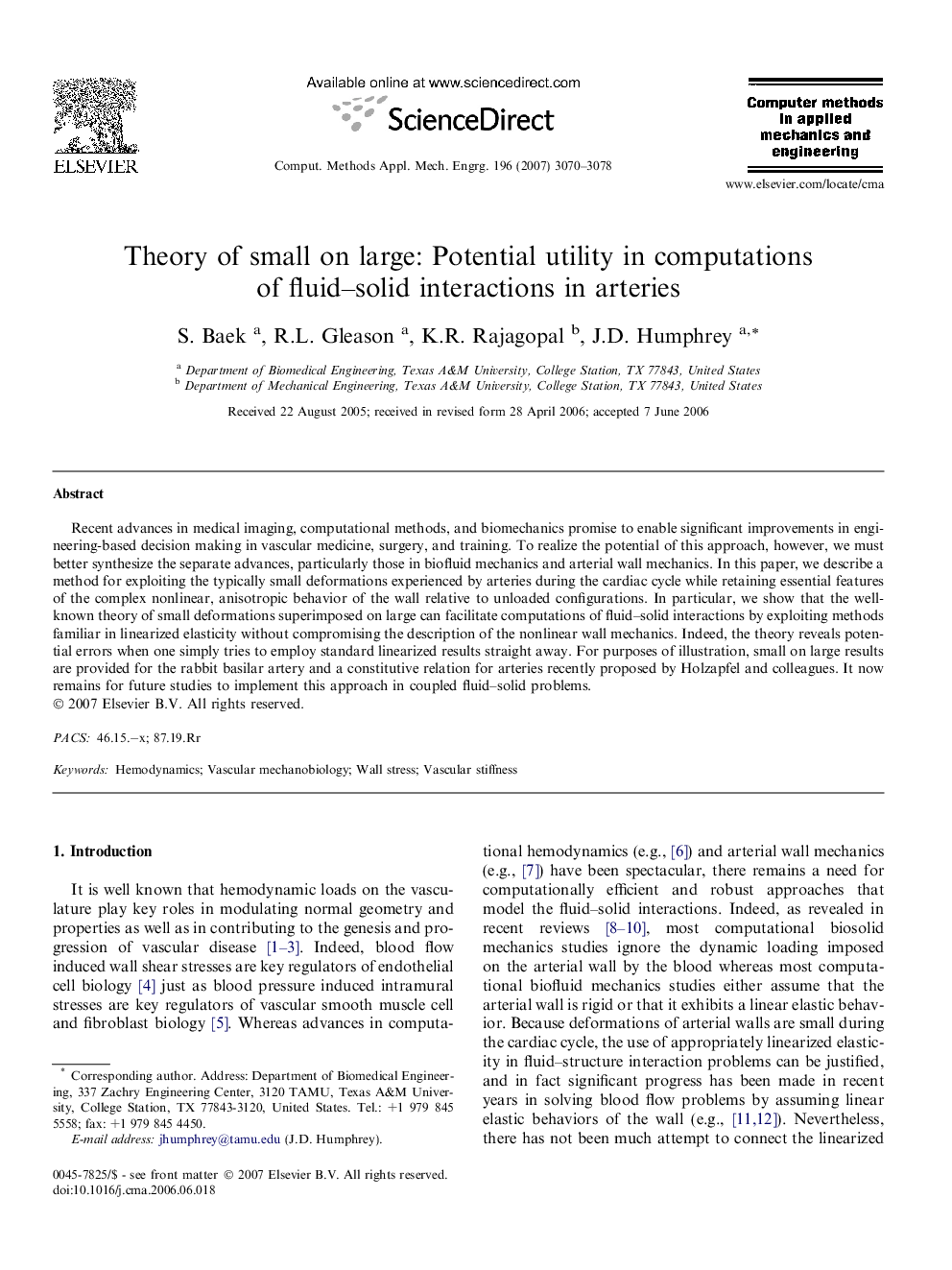| Article ID | Journal | Published Year | Pages | File Type |
|---|---|---|---|---|
| 500071 | Computer Methods in Applied Mechanics and Engineering | 2007 | 9 Pages |
Recent advances in medical imaging, computational methods, and biomechanics promise to enable significant improvements in engineering-based decision making in vascular medicine, surgery, and training. To realize the potential of this approach, however, we must better synthesize the separate advances, particularly those in biofluid mechanics and arterial wall mechanics. In this paper, we describe a method for exploiting the typically small deformations experienced by arteries during the cardiac cycle while retaining essential features of the complex nonlinear, anisotropic behavior of the wall relative to unloaded configurations. In particular, we show that the well-known theory of small deformations superimposed on large can facilitate computations of fluid–solid interactions by exploiting methods familiar in linearized elasticity without compromising the description of the nonlinear wall mechanics. Indeed, the theory reveals potential errors when one simply tries to employ standard linearized results straight away. For purposes of illustration, small on large results are provided for the rabbit basilar artery and a constitutive relation for arteries recently proposed by Holzapfel and colleagues. It now remains for future studies to implement this approach in coupled fluid–solid problems.
